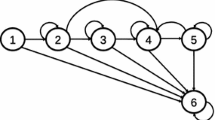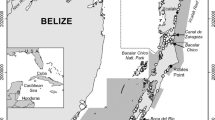Abstract
The finless porpoise Neophocaena asiaeorientalis inhabits coastal waters and rivers in East Asia and is exposed to various human activities. This species is listed on the IUCN Red List of Threatened Species due to a reduction in abundance. Although human-induced mortality can be a threat to porpoise populations, future anthropogenic impacts have not been quantitatively evaluated due to lack of demographic information. Adequate future population projections are needed to form the basis for conservation measures before the population declines to critical levels. We conducted a population viability analysis for the population of finless porpoise in the Inland Sea, Japan using a Leslie matrix model composed of age-specific survival and fertility rates. We described the uncertainty in the annual rate of increase (λ) for the finless porpoise using randomly sampled estimates of survival rate for other cetaceans with similar life histories. Plausible median estimates of λ ranged from 1.041 (age at first reproduction [AFR] = 7) to 1.056 (AFR = 5). Future population changes and extinction probabilities were predicted after combining these estimates with a predicted human-induced mortality rate (M) and available abundance estimates. The extinction probability after 100 years was 0 %. However, the probability of the quasi-extinction (<100 individuals) was as high as 79.0 % after 100 years. The results also suggest that the persistence of the finless porpoise population could be achieved with a small effort to reduce anthropogenic mortality.






Similar content being viewed by others
References
Amano M, Nakahara F, Hayano A, Shirakihara K (2003) Abundance estimate of finless porpoises off the Pacific coast of eastern Japan based on aerial surveys. Mammal Study 28:103–110
Barlow J, Boveng P (1991) Modeling age-specific mortality for marine mammal populations. Mar Mammal Sci 7:50–65
Barlow J, Clapham PJ (1997) A new birth-interval approach to estimating demographic parameters of humpback whales. Ecology 78:535–546
Bloch D, Lockyer C, Zachariassen M (1993) Age and growth parameters of the long-finned pilot whale off the Faroe Islands. In: Donovan GP (ed) Report of the International Whaling Commission Special Issue, vol 14., Biology of northern hemisphere pilot whalesCambridge University Press, New York, pp 163–207
Bradford AL, Wade PR, Weller DW, Burdin AM, Ivashchenko YV, Tsidulko GA, VanBlaricom GR, Brownell RL Jr (2006) Survival estimates of western gray whales Eschrichtius robustus incorporating individual heterogeneity and temporary emigration. Mar Ecol Prog Ser 315:293–307
Bradford AL, Weller DW, Wade PR, Burdin AM, Brownell RL Jr (2008) Population abundance and growth rate of western gray whales Eschrichtius robustus. Endang Species Res 6:1–14
Caswell H (1989) Matrix population models: construction, analysis, and interpretation. Sinauer Associates, Sunderland
Caswell H, Brault S, Read AJ, Smith TD (1998) Harbor porpoise and fisheries: an uncertainty analysis of incidental mortality. Ecol Appl 8:1226–1238
Currey RJC, Dawson SM, Slooten E (2009a) An approach for regional threat assessment under IUCN Red List criteria that is robust to uncertainty: The Fiordland bottlenose dolphins are critically endangered. Biol Conserv 142:1570–1579
Currey RJC, Dawson SM, Slooten E, Schneider K, Lusseau D, Boisseau OJ, Haase P, Williams JA (2009b) Survival rates for a declining population of bottlenose dolphins in Doubtful Sound, New Zealand: an information theoretic approach to assessing the role of human impacts. Aquat Conserv Mar Freshw Ecosyst 19:658–670
Dans SL, Alonso MK, Pedraza SN, Crespo EA (2003) Incidental catch of dolphins in trawling fisheries off Patagonia, Argentina: can populations persist? Ecol Appl 13:754–762
Galimberti F, Sanvito S, Boitani L, Fabiani A (2001) Viability of the southern elephant seal population of the Falkland Islands. Anim Conserv 4:81–88
Heinsohn R, Lacy RC, Lindenmayer DB, Marsh H, Kwan D, Lawler IR (2004) Unsustainable harvest of dugongs in Torres Strait and Cape York (Australia) waters: two case studies using population viability analysis. Anim Conserv 7:417–425
IUCN (2001) IUCN Red List Categories and Criteria Version 3.1., IUCN Species Survival Commission, IUCN, Gland, Switzerland
Jefferson TA, Hung SK (2004) Neophocaena phocaenoides. Mammalian Species 746:1–12
Jefferson TA, Robertson KM, Wang JY (2002) Growth and reproduction of the finless porpoise in southern China. Raffles B Zool 10:105–113
Kasuya T (1999) Finless porpoise, Neophocaena phocaenoides (G. Cuvier 1829), Handbook of marine mammals. In: Ridgway SH, Harrison R (eds) The second book of dolphins and the porpoises, vol 6. Academic, San Diego, pp 411–442
Kasuya T, Kureha K (1979) The population of finless porpoise in the Inland Sea of Japan. Sci Rep Whales Res Inst 31:1–44
Kasuya T, Tobayama T, Saiga T, Kataoka T (1986) Perinatal growth of delphinoids information from aquarium reared bottlenose dolphins and finless porpoises. Sci Rep Whales Res Inst 37:85–98
Kasuya T, Yamamoto Y, Iwatsuki T (2002) Abundance decline in the finless porpoise population in the Inland Sea of Japan. Raffles B Zool (Suppl 10):57–65
Moore JE, Read AJ (2008) A Bayesian uncertainty analysis of cetacean demography and bycatch mortality using age-at-death data. Ecol Appl 18:1914–1931
Reilly SB, Barlow J (1986) Rates of increase in dolphin population-size. Fish Bull 84:527–533
Shirakihara M, Takemura A, Shirakihara K (1993) Age, growth, and reproduction of the finless porpoise, Neophocaena phocaenoides, in the coastal waters of western Kyushu, Japan. Mar Mammal Sci 9:392–406
Shirakihara K, Shirakihara M, Yamamoto Y (2007) Distribution and abundance of finless porpoise in the Inland Sea of Japan. Mar Biol 150:1025–1032
Siler W (1979) Competing-risk model for animal mortality. Ecology 60:750–757
Slooten E, Dawson SM (2010) Assessing the effectiveness of conservation management decisions: likely effects of new protection measures for Hector’s dolphin (Cephalorhynchus hectori). Aquat Conserv Mar Freshw Ecosyst 20:334–347
Slooten E, Lad F (1991) Population biology and conservation of hector dolphin. Can J Zool-Rev Can Zool 69:1701–1707
Thompson PM, Wilson B, Grellier K, Hammond PS (2000) Combining power analysis and population viability analysis to compare traditional and precautionary approaches to conservation of coastal cetaceans. Conserv Biol 14:1253–1263
Wade PR (1998) Calculating limits to the allowable human-caused mortality of cetaceans and pinnipeds. Mar Mammal Sci 14:1–37
Wade PR, DeMaster DP (1999) Determining the optimum interval for abundance surveys. In: Garner GW, Amstrup SC, Laake JL, Manly BFJ, McDonald LL, Robertson DG (eds) Marine mammal survey and assessment methods. Balkema Press, Rotterdam, pp 53–66
Wang JY, Reeves R (2012) Neophocaena asiaeorientalis. In: IUCN 2012. IUCN Red List of Threatened Species. Version 2012.2. http://www.iucnredlist.org
Woodley TH, Read AJ (1991) Potential rates of increase of a harbor porpoise (Phocoena phocoena) population subjected to incidental mortality in commercial fisheries. Can J Fish Aquat Sci 48:2429–2435
Yoshida H (2002) Population structure of finless porpoises (Neophocaena phocaenoides) in coastal waters of Japan. Raffles B Zool 10:35–42
Yoshida H, Shirakihara K, Kishino H, Shirakihara M (1997) A population size estimate of the finless porpoise, Neophocaena phocaenoides, from aerial sighting surveys in Ariake Sound and Tachibana Bay, Japan. Res Popul Ecol 39:239–247
Yoshida H, Shirakihara K, Kishino H, Shirakihara M, Takemura A (1998) Finless porpoise abundance in Omura Bay, Japan: estimation from aerial sighting surveys. J Wildl Manage 62:286–291
Yoshida H, Yoshioka M, Shirakihara M, Chow S (2001) Population structure of finless porpoises (Neophocaena phocaenoides) in coastal waters of Japan based on mitochondrial DNA sequences. J Mammal 81:123–130
Acknowledgments
This research was supported by Grant-in-Aid for Scientific Research (B) 21380120. We thank Dr T. Saitoh (Chief Editor), Dr A. Punt (Associate Editor) and two anonymous reviewers for their constructive comments to improve our analysis. We also thank the members of the Fish Population Dynamics Laboratory, Atmosphere and Ocean Research Institute.
Author information
Authors and Affiliations
Corresponding author
Rights and permissions
About this article
Cite this article
Hashimoto, M., Shirakihara, K., Shirakihara, M. et al. Estimating the rate of increase for the finless porpoise with special attention to predictions for the Inland Sea population in Japan. Popul Ecol 55, 441–449 (2013). https://doi.org/10.1007/s10144-013-0374-5
Received:
Accepted:
Published:
Issue Date:
DOI: https://doi.org/10.1007/s10144-013-0374-5




